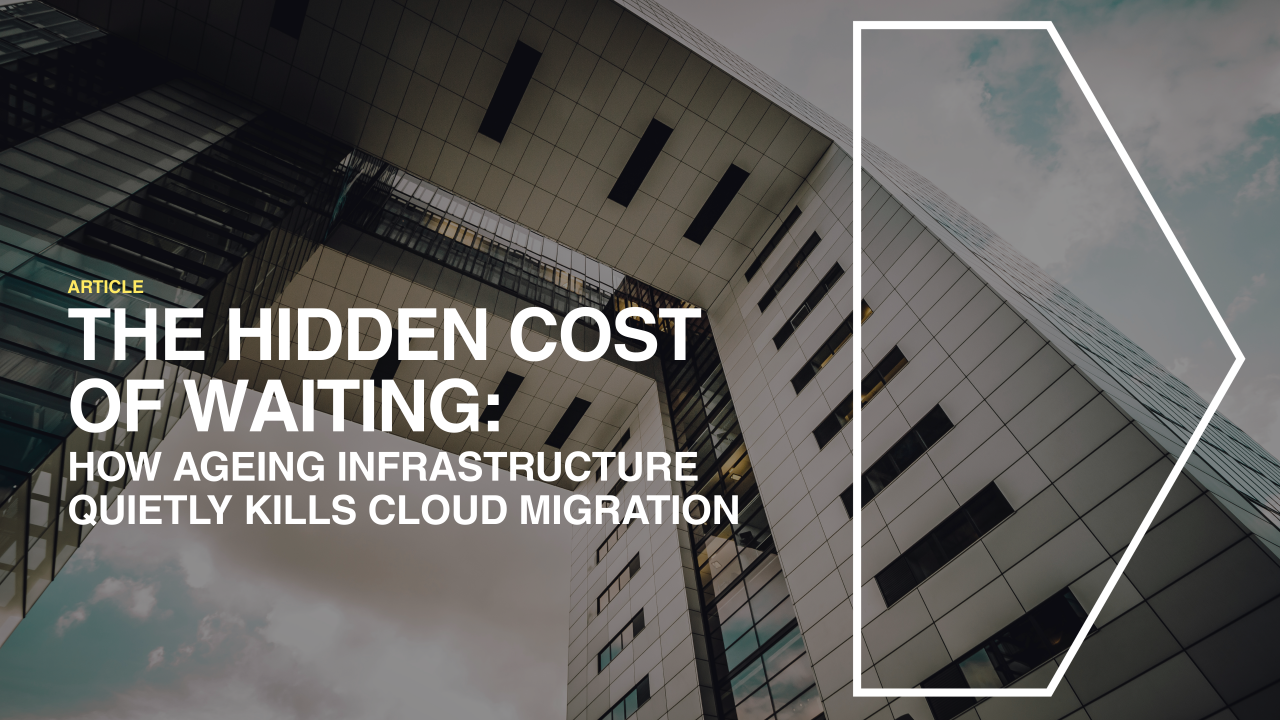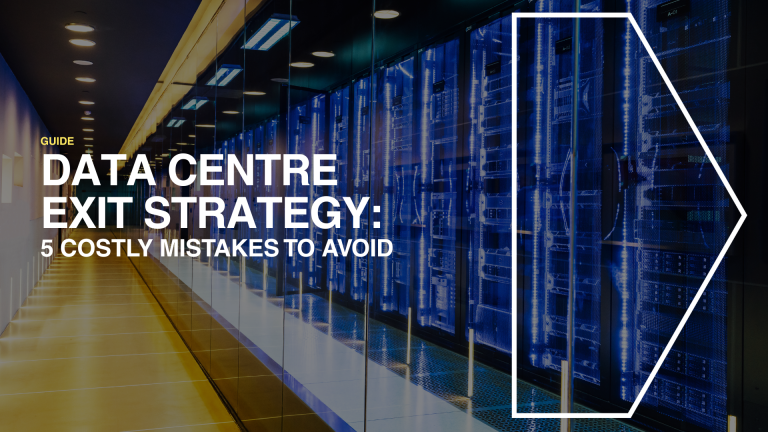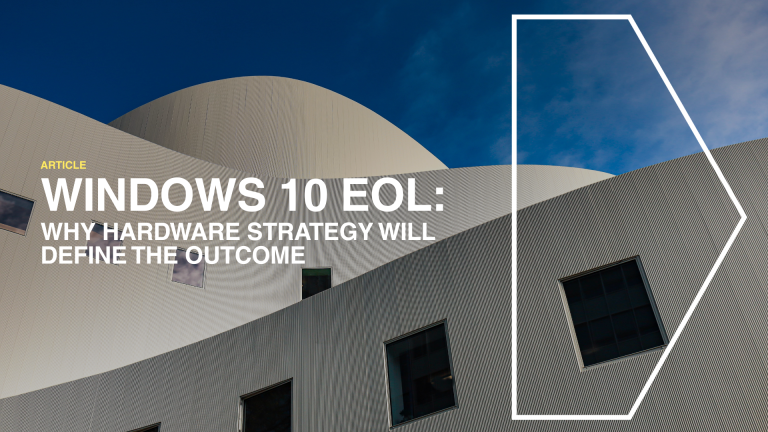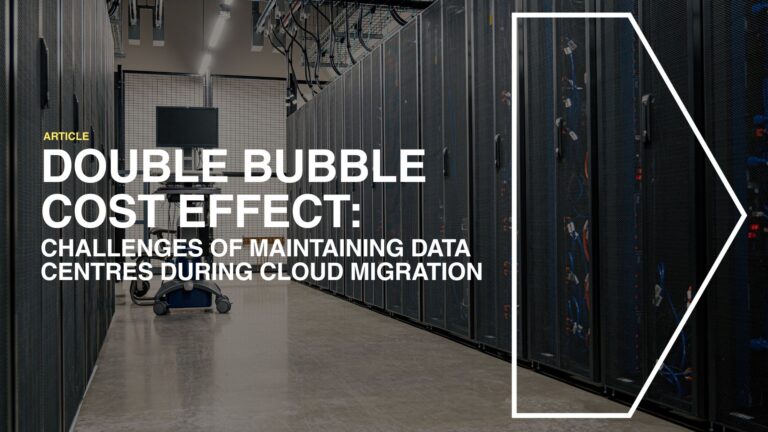Enterprises are delaying critical cloud migration projects because of ageing or partially depreciated systems. Standing still is costly: money, risk, agility and opportunity all drain away. True enterprise transformation requires unlocking value in existing infrastructure and applying smart lifecycle strategies that avoid heavy upfront investment or vendor lock‑in.
Cloud Migration Is Stalling in the Shadows
Many organisations start their cloud journey, then stall. Ageing hardware, data centre exit deadlines and expensive OEM renewals often create paralysis, especially when assets are still under warranty or below book value.
Gartner notes that “accelerating the movement of workloads to the public cloud is key to the kind of purposeful digitalisation businesses need to offset rising costs and outmanoeuvre any recession, but cloud adoption and migration is not a one size fits all proposition.”
[Gartner: Migrating to the Cloud: Why, How and What Makes Sense]
While public cloud may not always be the ultimate destination, the point is clear: each migration is bespoke, with different timelines for reaching the cloud, decommissioning owned or leased data centres and managing entrenched CapEx and OpEx IT spend.
The True Cost of Standing Still
Remaining on‑premises may feel safer, but it carries hidden costs:
- Double expenditure: paying to maintain legacy systems while investing in cloud initiatives
- Locked capital: underused or immovable assets restricted by vendor contracts
- Lost agility: slow responses, delayed scaling and missed opportunities for innovation
These costs are often invisible in budget planning but show up in missed opportunities, inefficiency and rising risk.
Why “Run It to Zero” No Longer Works
Traditionally, enterprises held on to assets until fully depreciated. In today’s cloud‑native world, this approach amplifies risk and cost for internal teams, their applications and their deployment models. A better starting point is assessing whether ‘running to zero’ still makes sense, by focusing on:
- OEM renewals for ageing kit often exceed expectations
- End‑of‑Service‑Life (EOSL) hardware increases the risk of downtime, security gaps and compliance breaches
- Rising ESG and regulatory demands make outdated systems both a reputational and financial liability
IDC warns that lift‑and‑shift migrations underperform when organisations ignore these dependencies, effectively replicating inefficiencies in the cloud at higher cost.
[IDC: “3 Harmful Mistakes Companies Are Making In Cloud Cost Management”]
What Smart IT Leaders Are Doing Differently
The most effective leaders pause to build infrastructure intelligence before committing to a migration path. They:
- Map assets approaching EOSL and their dependencies
- Review support contracts, warranties and leases to avoid costly renewals
- Identify hardware with latent financial or operational value
- Flag bottlenecks such as data centre exit timelines or regulatory friction points
- Align ambition with operational and financial capacity, not merely aspiration
This structured approach builds a defensible roadmap that reduces risk, optimises spend and secures executive buy‑in.
Analyst Consensus: Infrastructure Readiness First
Analysts agree: cloud without infrastructure readiness is a recipe for budget overruns and missed outcomes.
- Gartner argues that cloud success depends on aligning cloud initiatives with real‑world constraints and risk profiles.
- IDC quantifies risk: lift‑and‑shift without modernisation often inflates cost by ~30 per cent.
- Forrester frames transformation as a continuous programme: cloud migration must sit within broader modernisation of applications, infrastructure and governance.
Clarity and control must come before migration.
Questions IT Leaders Should Be Asking Now
- What is the book value vs resale value of our current infrastructure?
- Are we paying OEM premiums for hardware that could be supported more efficiently?
- Can we unlock budget by recovering value from existing assets?
- What is our risk exposure from running EOSL hardware or outdated software?
- Do we have governance in place to avoid vendor lock‑in and escalating maintenance costs?
Final Thought: Cloud Migration Is Financial Strategy as Much as Technology
The cost of doing nothing compounds over time. Enterprises that take an active stance, optimising their existing infrastructure and aligning it to cloud goals, gain not only cost efficiency, but agility and resilience.
Next Steps
Cloud migration is not a technology switch, it is an architectural, financial and operational shift. The organisations that succeed are those who invest time in completely understanding their infrastructure landscape before plotting a path forward.
If your team are preparing for cloud migration but facing blockers such as ageing hardware, locked-in support contracts or conflicting timelines, now is the moment to assess your infrastructure readiness.
RTK Group empower enterprises to move forward without unnecessary capex, risk or delays. Our migration framework supports IT leaders in building defensible, data-backed roadmaps grounded in reality, not assumptions.
To explore how infrastructure planning can accelerate, not delay, your transformation, contact an RTK strategist today.



